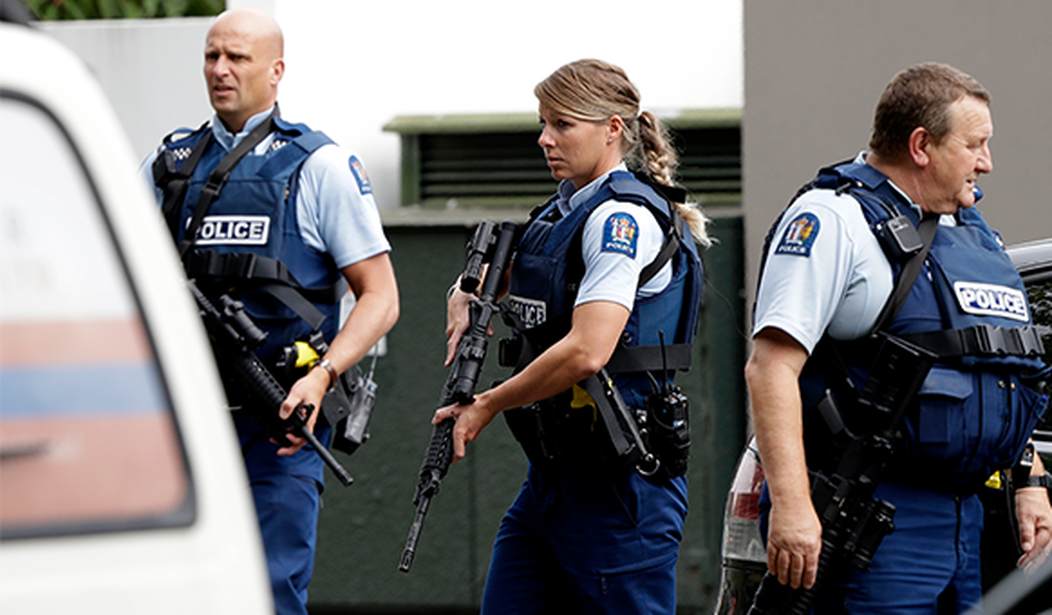The border crossings in Canada may have been cleared under Justin Trudeau’s new “emergency mandate” tyranny, but not so in New Zealand. The Freedom Convoy established in Wellington by some Kiwis who oppose the government’s COVID mandates has dug in on the lawns outside of the Parliament building and the police response has grown more confrontational. Unfortunately, this has led to some direct conflicts between the two sides, threatening at times to turn violent. Officials sent workers with forklifts to move concrete barriers into an ever-tighter cordon around the protesters’ encampment. Meanwhile, some protesters have threatened to drive vehicles into crowds of police officers, while others have sprayed noxious substances on law enforcement officers. The Prime Minister is now threatening to forcibly make all of the protesters “go home.” (Associated Press)
One protester drove a car toward a New Zealand police line, narrowly avoiding officers, while other protesters sprayed officers with a stinging substance, police said Tuesday, as they tightened a cordon around a convoy that has been camped outside Parliament for two weeks.
The clashes in the capital of Wellington came a day after police reported that some of the protesters had thrown human feces at them.
Police Assistant Commissioner Richard Chambers told reporters the actions of some of the protesters, who oppose coronavirus vaccine mandates, were unacceptable and would be dealt with assertively.
The majority of the protesters have remained peaceful, but they are obviously gearing up for a long-term siege. The original tents have been abetted by portable toilets, cooking facilities, and even a daycare center for the protesters’ children. On one section of the lawn, people have dug out a vegetable garden, which seems rather odd given how late in the growing season it is. Crates of donated food are arriving daily from all over the island.
With all of that said, some of the actions of an admittedly small group of protesters have taken a dark turn. While I appreciate the message being brought forward by the convoy, we cannot in good faith condone threats of vehicular homicide against police officers or the spraying of potentially toxic substances. (Three officers were hospitalized after being doused with an unidentified “stinging substance.”) If you didn’t approve of the BLM riots in the United States, you can’t simply turn around and ignore these tactics.
To their credit, the government in Wellington has mostly acted with remarkable restraint throughout this protest, at least when you compare this situation to what’s been unfolding in Canada. Thus far the worst they have done is turn on the lawn sprinklers and blare some loud music at them. The government has even shown considerable restraint in its rhetoric. Prime Minister Jacinda Ardern release a statement in response to the attempted vehicular assault incident saying, “What’s happening in Wellington is wrong.”
Ardern has repeated her intent to lift most of the remaining COVID restrictions this month, but she had already said that before the protest began. There will still be a vaccine requirement for people in certain professions, including teachers, doctors, nurses, police, and the military. More worrisome is the fact that an immunity passport is still required to enter most restaurants and non-essential stores. But the mandates that will remain in place after next week are still considerably milder than those that remain in Canada and some parts of the United States.
What both Ardern and the leaders in the Parliament have not done, however, is come forward to meet with protest leaders and publicly discuss their demands. The absence of a harsh military or police response to the protesters does not offset the absence of good-faith negotiations. Surely there is some common ground that could be found. If they can manage to do that, New Zealand could serve as a model for both protesters and governments in other nations to follow. The world has to exit the pandemic state of emergency and return to normal. More and more government leaders seem to be waking up to this reality. But not everyone has managed to figure out how to accomplish it.








Join the conversation as a VIP Member